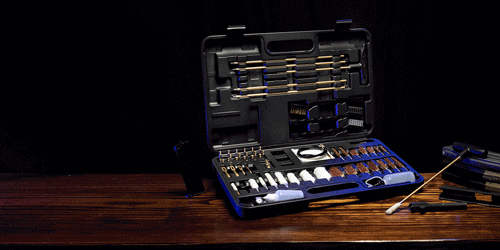The Ultimate Guide for Choosing an Effective Shooting Ear Protection
Did you know the sound of gunfire is the most hazardous non-occupational noise that Americans are exposed to? Exposure to noise greater than 140 dB can permanently damage hearing. Almost all firearms create noise that is over the 140-dB level. A small .22-caliber rifle can produce noise around 140 dB, while big-bore rifles and pistols can produce sound over 175 dB. Firing guns in a place where sounds can reverberate, or bounce off walls and other structures, can make noises louder and increase the risk of hearing loss. Also, adding muzzle brakes or other modifications can make the firearm louder. A dangerous sound is anything over 85dB. Most gunshots average a dB level of 157. It's important to wear hearing protection every time you shoot a gun to avoid possible hearing damage.
Regardless of the type of hearing protection selected, below are some factors should be considered when purchasing shooting hearing protection:
-
How much noise is too much?
- 85 Decibels (dB) - the "Action Level" where hearing protection is required.
- 90 dB - the OSHA, 8 hour average exposure limit.
- 100 dB - exposures longer than 15 minutes are not recommended.110 dB - regular exposure of more than 1 minute risks permanent hearing loss
- Know How Much Noise Reduction You Need
- Noise Reduction Rating:
- NRR is an abbreviation for Noise Reduction Rating. The NRR is a number measured in decibels (dB). Its intended use is to help consumers compare the amount of noise being reduced by hearing protection devices.The current range of NRR available in the U.S. market extends from 0 to 33 dB.
- How do I use NRR to compare hearing protection devices?
- In general, the higher the NRR, the more noise is being prevented from entering the ear. So a device with an NRR of 30 will provide more protection against damaging noise than a device with an NRR of 26.
- Fit: It is critical to ensure that hearing protection fits properly, especially for kids or others new to shooting sports. For earmuffs, padded headband and the ability to adjust earcups helps provide a very comfortable fit on a wide range of shooters, including youth, women and others with smaller heads. For foam earplugs, they must be rolled and compressed between the fingers before inserting them deeply into the ears. To perform properly, they must be flush and fully expanded, deep inside the ear canal.
-
Here are some of the types of hearing protection to choose from:
- Foam earplugs: These are the most commonly used form of hearing protection because they are inexpensive and provide a high noise reduction rating—up to 33dB. When inserted properly, they completely seal the ear canal, while the cellular composition of the foam creates tiny airspaces which fracture and re-fracture sound waves.
- Passive earmuffs: This affordable choice fits over the ears and form a barrier to shield the ears from sound. Today’s passive earmuffs use carefully engineered materials and designs to fracture and re-fracture sound waves, resulting in higher NRRs than were possible with earlier passive earmuff designs.
- Electronic earmuffs: These are more expensive, but offer unique benefits. They allow users to hear surrounding sounds at normal or even louder-than-normal levels, which is extremely helpful for conducting conversation or receiving range commands. When a dangerously loud sound over 82dB is detected, the circuitry compresses the sound to the speakers inside the earcups until the noise returns to a safe level.
- If you love shooting and hunting, we strongly recommend that you try our Gloryfire Electronic Ear Protection for Shooting.

- It is designed for shooters, hunters who need face to face communications in gun range with NRR 23dB. Gloryfire electronic hearing protection allows you to hear what's around you except gunshot while protecting your ears. It automatically amplifies low sounds while compressing loud sounds.
- This shooting ear protection uses advanced electronic compression technologies to suppress harmful gunshot noise and amplify low-level sounds. Compared with other hearing protectors, our amplifier effect will be better. The earmuffs provide vivid and clear stereo sound through the built-in new chip, which can amplify the sound by up to 1.3 times, and better help you determine which direction the sound comes from.
- A slim cup design won’t get in the way of a rifle or shotgun when you mount it to your shoulder for firing. To ensure long-term comfort, our shooting ear muffs have solid padding all around, both to block out the sound of shooting and to maintain you get clear communication.
- In addition to shooting hearing protection, we use a high-end MP4 headphone cable, which greatly improves the sound quality and is very suitable for listening to music.The shooting earmuffs are also equipped with a vertical volume control, which can be easily rotated to increase or decrease the amplified volume.





